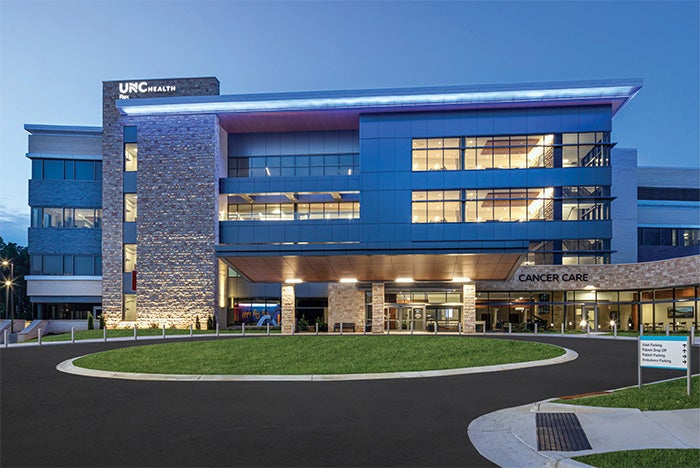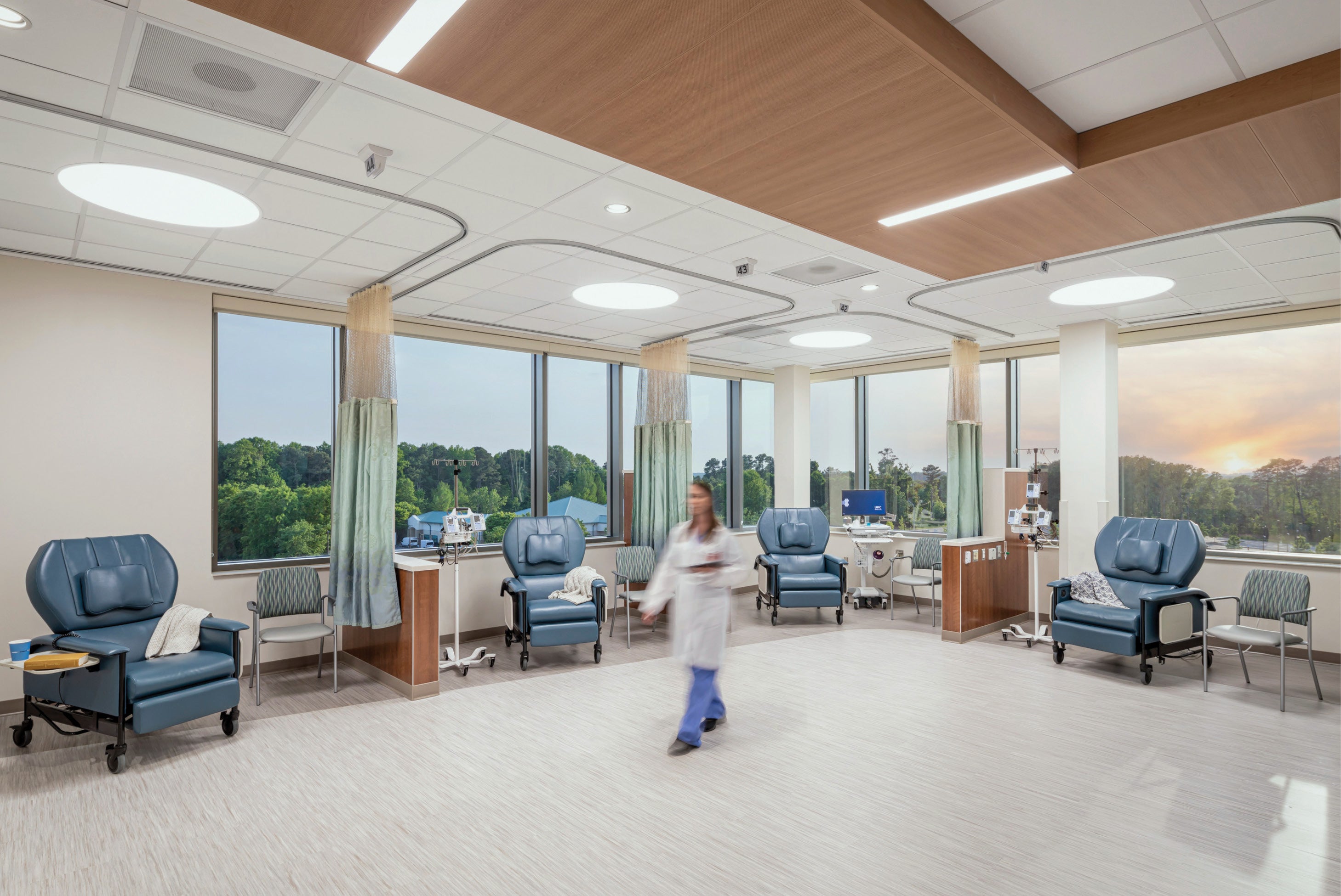Elevating care through clarity

Photos by Caleb Tkach, AIAP
When it comes to patients’ relationships with health care facilities, first impressions are just the start of the journey. Intuitive clarity is of central importance. By supporting the emotional journey of cancer patients, the UNC Rex Cancer Center in Raleigh, N.C., puts into practice through design its mission of conquering cancer together. The 145,000-gross-square-foot stand-alone cancer center exemplifies a patient-friendly focus.
The community-centric and comprehensive approach treats the body, mind and spirit of cancer patients and their caregivers. Traditional clinics, medical oncology and radiation therapy are combined with nontraditional therapies, including acupuncture, support groups, massage, art, music, yoga and spiritual care, to enhance the quality of life.
The design team engaged in a “mapping with empathy” approach by virtually walking different user personas through the proposed design for the new cancer center. The team initially diagrammed the flows for each patient type, identifying the key steps in the patient experience. A total of 21 different patient flow experiences were initially identified. Many of these flows would be experienced by the same patient during different types of visits to the same facility. The goal of maintaining personalized care yet simplifying and standardizing the patient experience became a driver in the design of the new health care facility. This goal aimed to optimize ease of use for the patient.

Photos by Caleb Tkach, AIAP
The team then used a computer-simulated model and choreographed the patient experience, including wait times and staff handoffs from registration, to a patient navigator, to the care team. The simulation showed that using a basic centralized registration approach for all patients and patient types in such a large facility could potentially cause intake bottlenecks that would negatively impact the patient experience. To limit the risk of backups yet still maintain consistency with the centralized registration experience, the team implemented several solutions.
First, they right-sized the number of registration bays to minimize wait times during peak registration times of the day. The team then identified opportunities for online or assisted kiosk registration for returning patients, and determined that specific patient populations can bypass daily registration and go directly to treatment areas, such as radiation oncology patients who visit daily during intense treatment periods.
The team also analyzed patient volumes for near-term and long-term growth, as well as made future predictions by modeling various scenarios to predict when the planned building might reach maximum utilization. Additionally, the design team engaged with the UNC Rex patient and family advisory council throughout the design process. The council provided critical feedback that helped inform some of the design decisions.
WANT TO BE FEATURED? Visit the American Society for Healthcare Engineering's Architecture for Health Showcase to learn more about participating.

